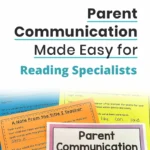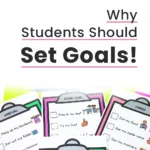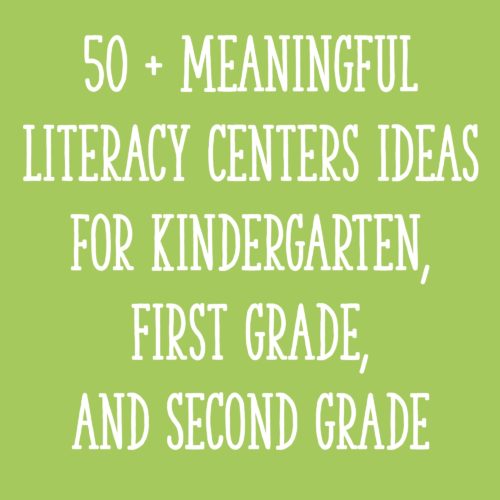As a teacher, you dedicate your time and energy to educating and inspiring your students. However, the demands of the job can often lead to burnout and overwhelm. The good news is that with a few strategic changes, you can work less this school year while still maintaining the high standards of your teaching!
In this post, I’ll go through a process you can follow, with practical tips to help you achieve a better work-life balance. All of the information you’ll be reading about is from a resource, the “Work Less” Workbook, which I provide to my Literacy Club members.
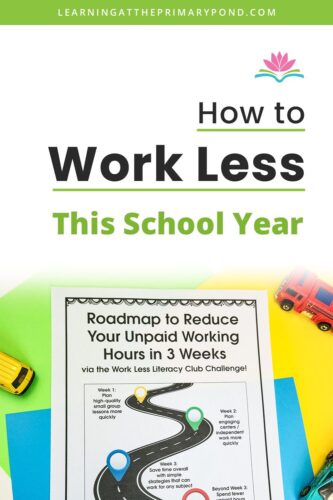
Reduce Your Unpaid Working Hours
Teachers are constantly prepping, organizing, grading, etc. Let’s say the actual school day, when you are contracted to be in the building, is 8:30 AM – 3:00 PM. Can you relate to this scenario at all?
- You arrive at school at 7:00 AM to get to the copier first! After making copies, you spend time looking for small group books at alllll your students’ current levels – and then you sit down to make plans to go with the books. Then the first bell rings – it’s 8:25, and you rush off to help with student arrival.
- While your students are at lunch/recess, you quickly shovel in your salad and start cutting out center materials. You search for other manipulatives and games for centers. You start to organize your resources around the room…but then your kids come back from recess. Time’s up!
- Once students head home for the day, you think back to small group time. A couple of your small groups didn’t go as well as you wanted them to. In one group, the text was too easy and the group flew through it. You didn’t have enough planned to keep them engaged at their level. With another group, the text was way too difficult. Students were struggling to decode the words, so they didn’t finish the text. Meanwhile…students who were supposed to be doing independent work at centers were off-task. It’s possible they didn’t even know how to complete the games because you only had a few seconds to explain how to play them. You don’t want tomorrow’s centers/small groups to turn out like today’s did…
- So even though it’s after your contracted time, you spend another hour searching for small group materials for each group, and more center resources. You glance up at the clock and realize it’s almost 5:00 pm. You’re supposed to meet a friend for dinner, and you’re going to be late because you stayed too long at school….yet again.
- The next morning, you arrive at school at 7:00 AM and it starts all over…
In this scenario, you had the very best intentions! You wanted to have a high-functioning, differentiated classroom where students are challenged at an appropriate level. You wanted to make sure the materials were engaging. But in the scenario laid out above, you’re working more than 3 extra hours a day and STILL not accomplishing your goal.
What if I told you there are ways to reduce your unpaid working hours and STILL be an excellent teacher?!
In my Literacy Clubs, I teach a 3-week process where teachers reduce the amount of hours they’re working by:
- Streamlining their small group reading instruction
- Choosing literacy centers strategically
- Adding in additional strategies
For the first 2 weeks, we focus on time-saving strategies related to small groups and centers, because planning them can be one of the most time-consuming parts of the entire school day. But in week 3, we look at strategies that apply to your planning and prep time as a whole!
Let’s dive into this process!
Week 1: Small Group Instruction
During the first week of the challenge to work less, teachers learn to plan small group lessons more quickly. Here are the small group instruction strategies:
Strategy #1: Limit the total number of small groups you have to 5 or fewer. When you look at the data, you may have a huge range of student abilities. You want to be able to differentiate for all students; however, capping the number of groups at 5 (or less, if possible) helps you differentiate while still having time to realistically meet with all groups throughout the week.
Strategy #2: Make a list of all resources you have for small group texts (assuming that your students are already reading). There might be certain websites you use, certain resources you’ve purchased, your school’s book room – just get it all in one list.
And if you happen to be a member of the Kindergarten Literacy Club or the 1st & 2nd Grade Literacy Club, you’ll receive multiple texts and small group lessons that are ready to teach on the first of each month! This is a huge time-saver. In your planner/calendar, you’ll want to set aside time to review your new literacy club materials at the beginning of each month.
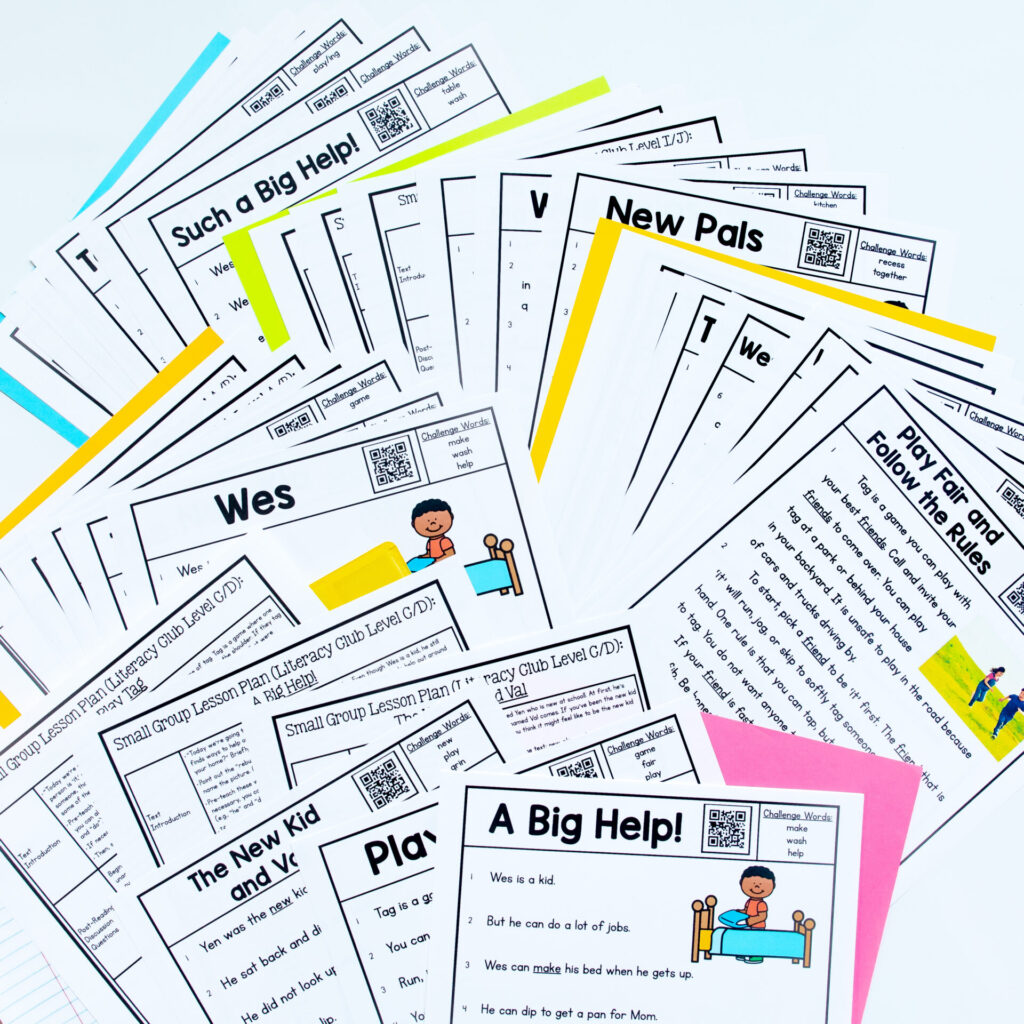
Strategy #3: Make or find repeatable templates. Should your small group lessons be designed specifically for each group? Yes, absolutely. But can you reuse many of the same templates and outlines? Yes, absolutely! The more consistency you can create for yourself, the more time you have. There’s just no reason to plan every small group lesson from scratch, starting at zero.
If you’re a Literacy Club member, you’ll already have many lessons planned for you! And you can use the file in your login area titled “Small Group Planning Toolkit” to plan any remaining lessons. This guide makes planning incredibly easy because it breaks down the lesson and gives options for activities.

In the Toolkit (included in your Literacy Club membership), there are templates for Kindergarten through 3rd grade levels.
Strategy #4: Keep small group word work/phonics activities simple. Inside the Literacy Clubs, you’ll find these “Small Group Word Work Cards.” These are one of my favorite materials – you simply print them out (on cardstock, if possible), laminate them, and keep stacks on hand (I divide them up by phonics skill). When we have a little time to review a phonics skill, I just pull a stack out and students use them to spell words into the sound boxes!
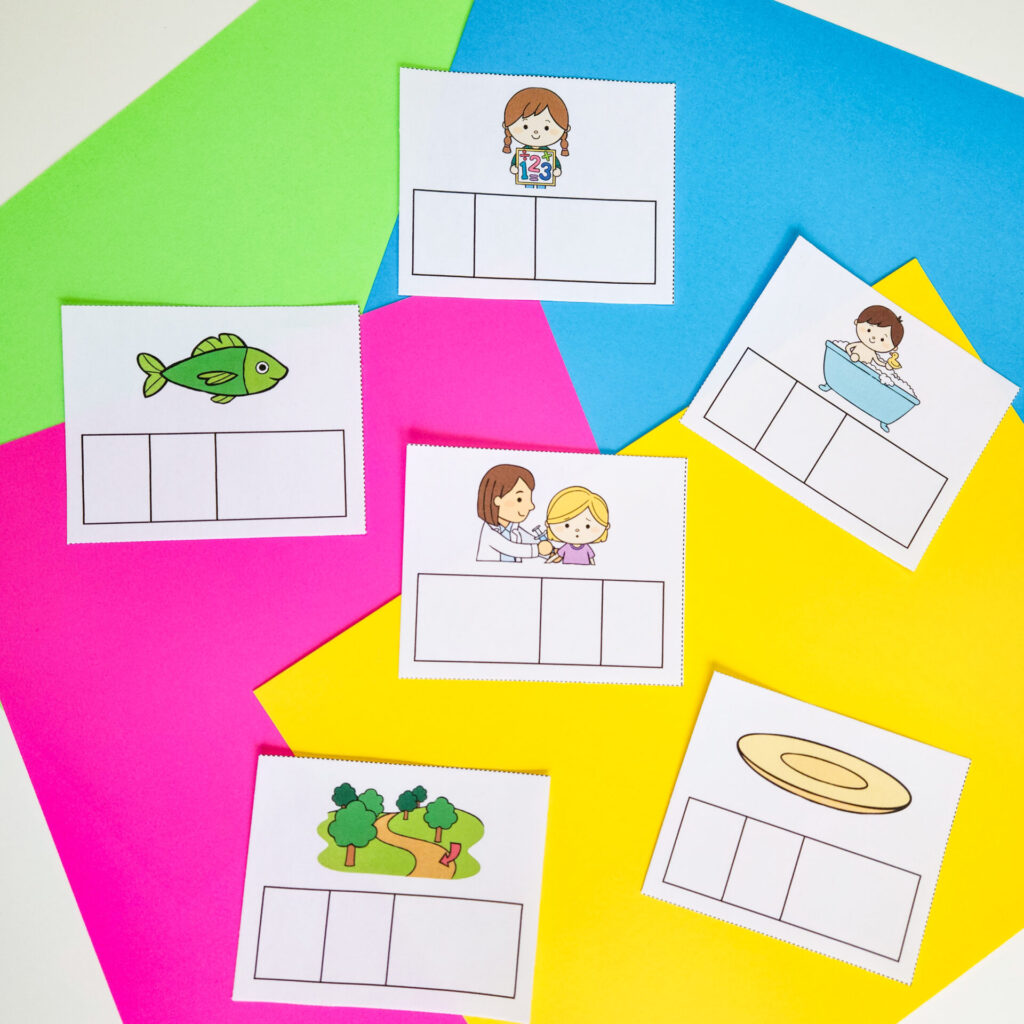
The directions in the resource explain how to use the cards in different ways. They’re a “prep once, use many times” resource for Kindergarten through 3rd grade.
Week 2: Centers and Independent Work Activities
During Week 2 of the challenge, I encourage you to focus on centers and independent work activities. You’ll learn how to quickly plan and prep activities for your students to work on while you meet with small groups.
Strategy #1: For quality independent activities, plan your centers/stations/independent work around skills. The skills will depend on your grade level and what your school requires, but they may include:
- phonological awareness
- phonics
- high frequency words
- reading fluency
- comprehension
- writing/response to literature
I recommend typing up a checklist of skills for yourself and reusing that each week when planning. (There’s no reason to re-think it every week or risk missing important skills!)
Strategy #2: Make sure you have some centers/independent options that can be done over and over again. You might choose anywhere between 2-5 new activities to introduce each week, but only introduce 1 per day. Make sure to model and practice with students before asking them to do it on their own.
Sidenote: Small group time is a great place to play games that eventually students will do in centers! Plus, you’re doing “double duty” by using a game you were going to have to teach anyway, so that saves time!
Strategy #3: If you’re a Literacy Club member, in your planner/calendar, set aside time on the 1st of each month to review your new literacy club materials. If this sounds familiar… it’s the same strategy as suggested above in the “Small Group” section of Week 1’s challenge. When you make time to look at the small group materials, check out your new centers as well! The independent activities often include different levels so you can easily differentiate or have students do more than one version of the activity.
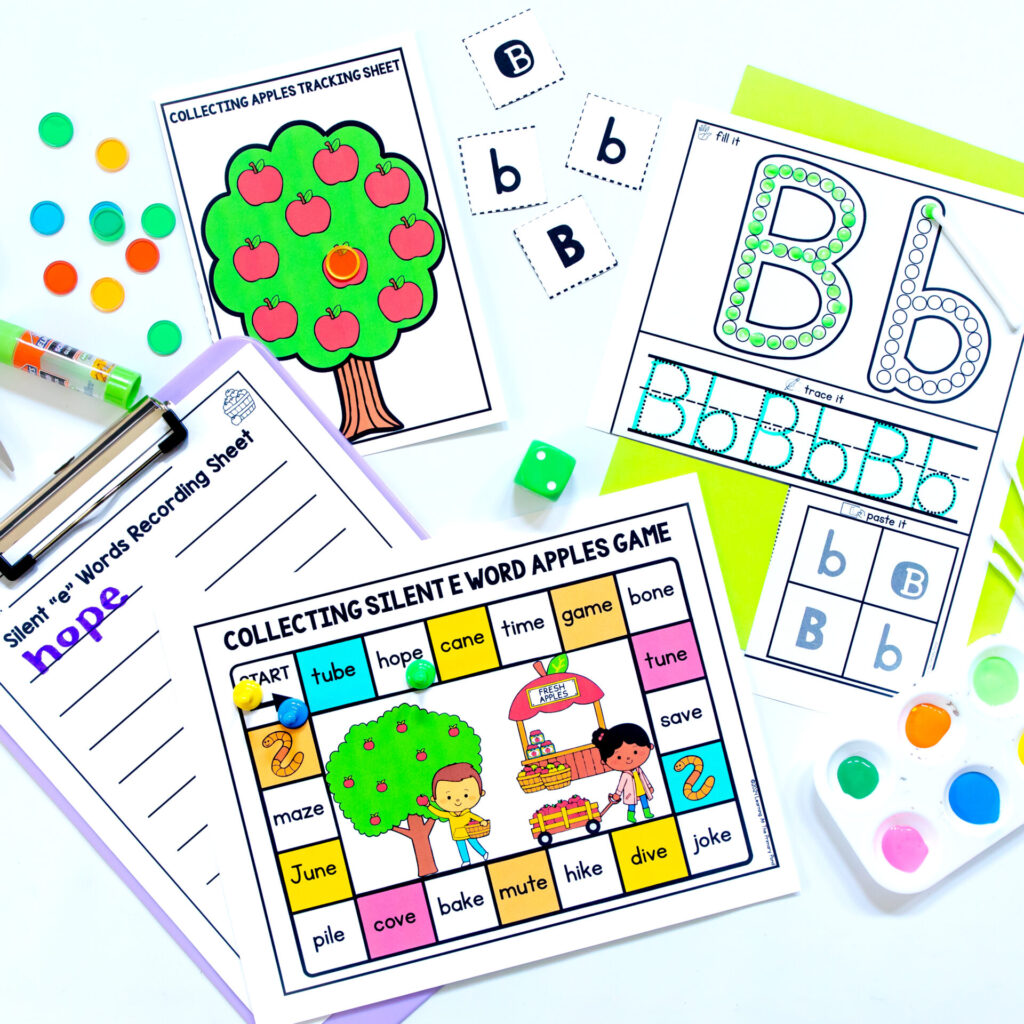
Strategy #4: Make a list of all the centers you tend to use. This way, when you start planning, you don’t have to try and think back to what you did in the past – it’s all there in one spot!
If you’re a Literacy Club member, you already have tons of centers! But should you need additional ideas, look at the “Centers Planning Guide” in your Literacy Club login. This provides lots of easy-prep, high-quality center ideas.

Week 3: Additional Tricks to Help You Work Less
During the last week of the challenge, I provide a few other time-saving strategies to help you reduce your unpaid work time.
Strategy #1: Save time by “batching” your lesson planning. For example, if you’re sitting down to work on writing lesson plans, try doing 2-4 weeks at a time. You may have to adjust the plans slightly as you progress through the lessons and see how students are doing, but you’ll save time overall. When you batch plan, your brain will already be in “lesson writing mode,” and you’ll also have your materials out (vs. having to bring everything out again a week later).
Strategy #2: Batch making copies. Try to do all your copying for 1-2 weeks at a time. I know how much time it can take to get to the copier, wait in line, etc. Even better, if you have a grade team of teachers, designate one person to make copies for math for 2 weeks, another to make copies for science for 2 weeks, etc.
Strategy #3: Reflect on your current routines and look for “accidental time-wasters.” For instance, do you try and plan most of your lessons after school, but you’re exhausted so it takes way longer than it would if you planned them in the morning? Or do you tend to get stuck in long conversations with coworkers when you are trying to get work done? (Socializing is, of course, so important, but it’s important to set boundaries if you wind up staying super late as a result.) Once you’ve identified your accidental time-wasters, make a plan to reduce or eliminate them.
Strategy #4: Get help from volunteers. Having helpers in the actual classroom is great! But another thing to consider is that people don’t have to be physically present to support you. Maybe you could send things home (i.e. centers to cut or books to fold) with a parent from your classroom, a member of the PTA/PTO, or even a local community member. So many people want to give back by serving kids. It may take a little creativity on your end to figure out how to make it happen, but getting prep work done by volunteers is a HUGE time-saver.
Strategy #5: Motivate yourself to work more quickly and efficiently by having “quitting time deadlines.” Each week or month, decide ahead of time how long you will work before/after school. You might designate just one day per week to stay late or 2-3 mornings you’re going to come in a little early. Whatever the case may be, this means that the other days you’ll be coming/leaving at normal times. Then, STICK to your deadlines! Set an alarm on our phone if you have to. Don’t make exceptions unless there is a truly pressing emergency. Enlist a teacher buddy to help you stick to this commitment you’ve made to yourself. (The commitments you make to yourself are JUST as important as those you make to other people – if not more important in some cases.)
Conclusion
By implementing these strategies, you can reduce your workload and create a more balanced and fulfilling teaching experience. Remember, working less doesn’t mean caring less. It means being more efficient, prioritizing what truly matters, and taking care of yourself so you can continue to inspire and educate your students effectively.
For more information on implementing many of the strategies outlined above AND tons of materials that save you hours each month, check out my Literacy Clubs.
Members receive new resources at the beginning of every month! Here are some of the features:
- Small group readers and lesson plans
- Differentiated centers
- A monthly Q & A Zoom call
- A monthly webinar
- Access to a private online community forum
CLICK HERE to learn more about the Literacy Clubs!
Happy teaching!


